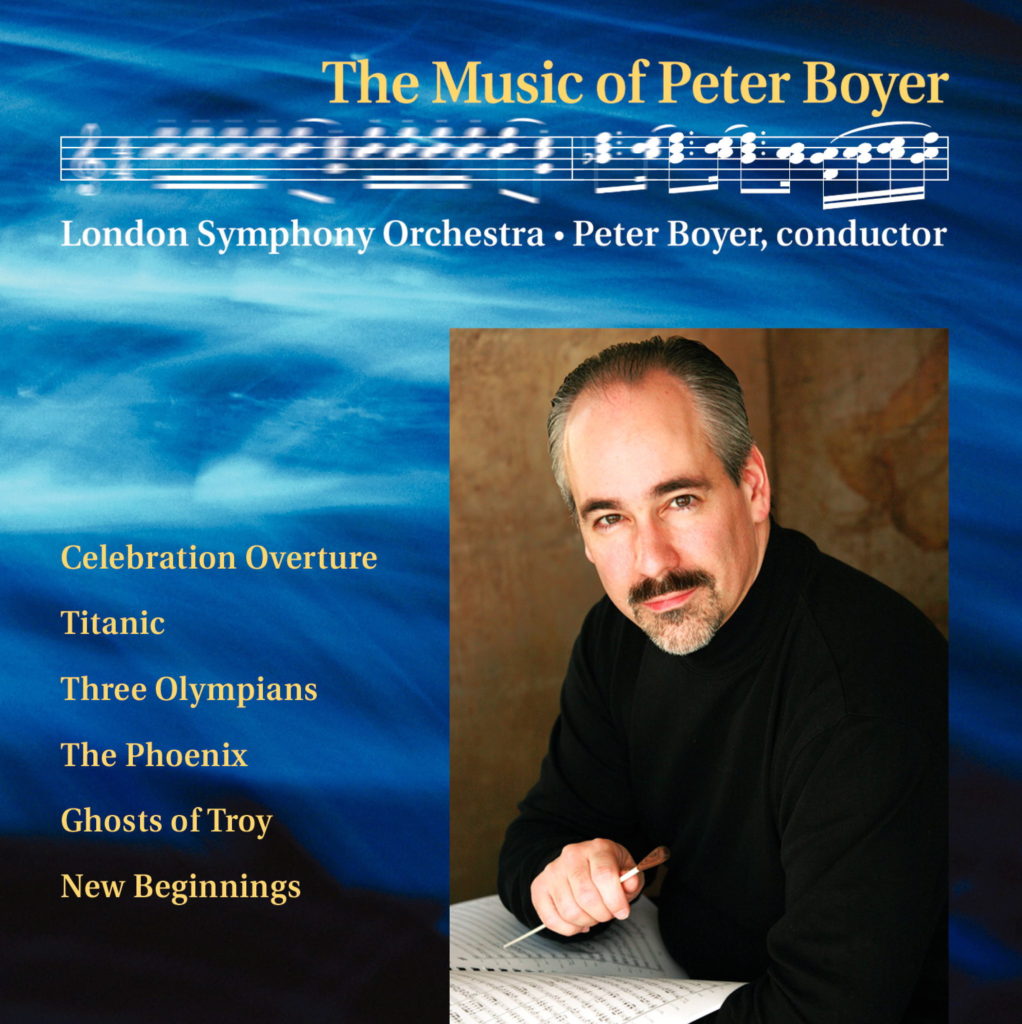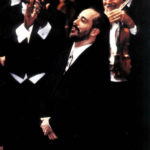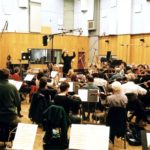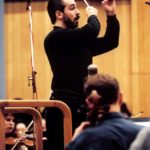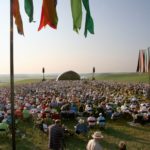— The Providence Journal
New Beginnings was one of Peter Boyer’s earliest orchestral commissions, for the Kalamazoo Symphony Orchestra, celebrating the opening of The New Bronson Hospital in 2000. The work has become quite popular on classical radio, with Boyer’s London Symphony Orchestra recording receiving thousands of broadcasts on stations throughout the United States since its release in 2001. New Beginnings has been heard from Carnegie Hall to the Kansas prairie, and adapted for such varied occasions as the 75th anniversary of the W.K. Kellogg Foundation, background music on CBS This Morning, and in numerous arrangements for concert bands and marching bands, in addition to its many concert performances by such orchestras as the Houston Symphony, Colorado Symphony, and Buffalo Philharmonic.
Instrumentation
3(II,III=picc).3(III=corA).3(III=bcl).3(III=cbsn)—4.3.3.1—timp.perc(4)—harp—pft(=cel)—strings
Duration
11:30
Composition Date and Commission
Composed 2000
Commissioned by Bronson Hospital for the Kalamazoo Symphony Orchestra to celebrate the opening of The New Bronson
Critical Acclaim
“The piece revealed a highly gifted composer with an impressive grasp of orchestration… Boyer also offered winning melodies, as during a quiet middle section that melded suggestions of Copland and the gentle repetitiveness of some current minimalist composers. A driving conclusion brought the audience to its feet in enthusiastic approval.”
— The Kalamazoo Gazette
“New Beginnings… is in Boyer’s most festive mode, replete with fanfares for trumpet and horns, yet so melodically rich and surely crafted that it rises above its light, occasional origin. The middle section has a heart-warming Barber-like theme for oboe, counterpoised by exhilarating flourishes with exuberant percussion writing.”
— South Florida Sun-Sentinel
“New Beginnings… combined open-hearted lyricism in the American vein, driving passages, fanfares and mixed meters, and created a soundtrack-like atmosphere.”
— Intelligencer Journal/New Era, Lancaster, PA
“Music to celebrate the opening of a hospital might seem a curious selection for a symphony concert, but it’s actually remarkably appealing. The 12-minute piece evokes strong imagery of its subject, beginning with a celebratory fanfare from the trumpets and horns, followed by a lyrical theme of health and healing. New Beginnings is filled with an energy that propels us through the building project… toward a glorious finale.”
—Sunday News, Lancaster, PA

